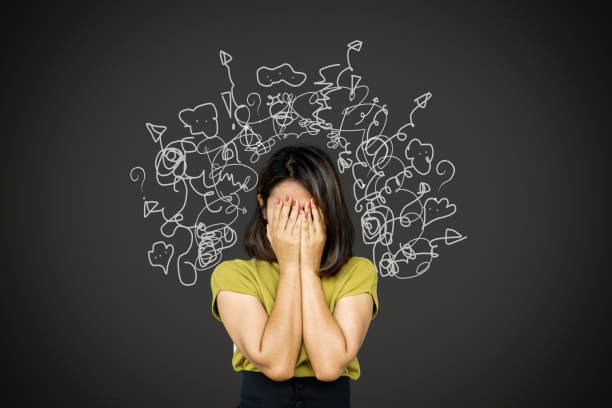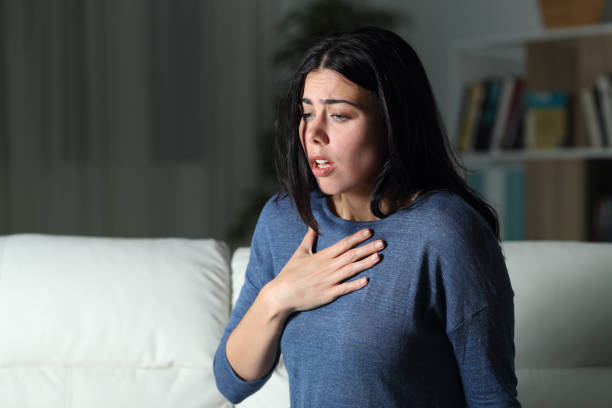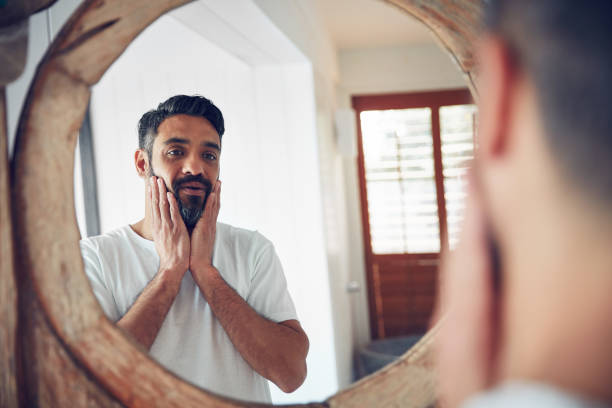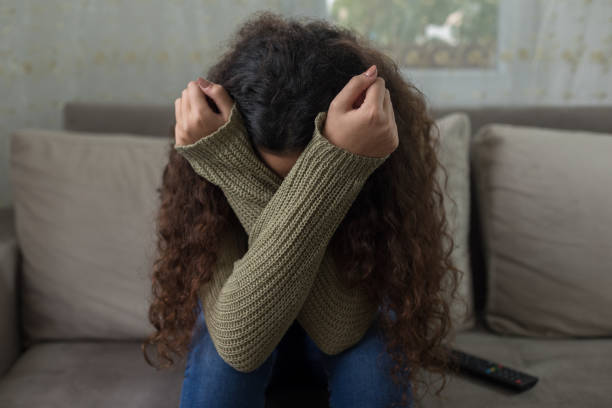
Anxiety is a natural stress response, but for people with an anxiety disorder, it can feel like an ever-present shadow, affecting daily life and well-being. Understanding anxiety and learning effective coping strategies are essential steps toward regaining a sense of calm and control. This guide explores the different types of anxiety disorders, provides information about their causes, and offers practical advice for managing symptoms day-to-day.
What is anxiety?
Anxiety is more than an occasional worry or fear; it is a pervasive condition that can manifest both mentally and physically. While everyone experiences anxiety at some point, chronic anxiety may indicate the presence of an anxiety disorder.
Types of Anxiety Disorders
- Generalized anxiety disorder (GAD): is characterized by persistent and excessive worry about everyday activities or events.
- Panic disorder: This involves recurrent panic attacks — sudden episodes of intense fear, physical symptoms, and a feeling of losing control.
- Social anxiety disorder: Fear of social situations or criticism, leading to avoidance of gatherings or interactions.
- Specific phobia: Intense fear related to particular objects, situations, or activities (e.g., heights, flying).
- Obsessive-compulsive disorder (OCD): Intrusive thoughts (obsessions) and repetitive behaviors (compulsions) aimed at relieving anxiety.
- Post-traumatic stress disorder (PTSD): Anxiety triggered by a traumatic event, causing flashbacks, nightmares, and increased rumination.
Anxiety symptoms and signs
Anxiety disorders manifest differently in individuals, but common symptoms include:
- Excessive worry or fear.
- Feeling restless or anxious.
- Difficulty concentrating.
- Irritability.
- Muscle tension.
- Sleep disturbances.
- Physical symptoms such as a fast heartbeat, sweating, or nausea.
What causes anxiety disorders?
The exact causes of anxiety disorders are multifaceted, including:
- Biological factors: genetics, brain chemical imbalances, or overactive amygdala responses.
- Environmental triggers: stressful life events, trauma, or long-term stress.
- Lifestyle influences: poor sleep, excessive caffeine or alcohol intake, or lack of exercise.
- Cognitive patterns: negative thought processes and an overactive worry cycle.
Understanding the root of your anxiety can provide clarity and guide effective treatment options.
Dealing with anxiety: instant relief strategies
When anxiety strikes, these strategies can help calm your mind and body:
1. Practice deep breathing
Anxiety often leads to shallow, rapid breathing, which exacerbates symptoms. Counteract this by practicing diaphragmatic breathing:
- Take a deep breath through your nose and count to four.
- Hold your breath in for a count of four.
- Exhale slowly through your mouth to a count of six.
2. Grounding techniques
Grounding helps anchor you in the present moment. Try the 5-4-3-2-1 method:
- Identify 5 things you can see.
- 4 things you can touch.
- 3 things you can hear.
- 2 things you can smell.
- 1 thing you can taste.

3. Activity and exercise
Physical activity releases endorphins, which are natural mood boosters for us. Even a brisk walk can reduce anxiety by lowering cortisol levels.
4. Use soothing tools
Keep calming tools nearby, such as essential oils (lavender, chamomile), stress balls, or weighted blankets.
Long-term strategies for managing anxiety
1. Build a strong support system
Talk to trusted friends, family, or support groups. Sharing your feelings reduces emotional burden and increases connection.
2. Develop a routine
Consistency in daily habits provides a sense of stability, which can reduce anxiety triggers. Aim for regular sleep, balanced meals, and setting work-life boundaries.
3. Embrace mindfulness and meditation
Mindfulness teaches you to live in the present and accept thoughts without judgment. Apps like Calm or Headspace can guide beginners through good meditation practices.

4. Journal your thoughts
Writing helps clear your mind and identify anxiety patterns. Try writing down what triggered the event, how you felt, and what helped you calm down.
5. Limit anxiety-provoking stimuli
Minimize exposure to stress-producing factors like the news or social media. Set boundaries to protect your mental health.
6. Focus on nutrition and hydration
Avoid high-sugar, high-caffeine foods that can trigger anxiety. Include foods rich in magnesium, omega-3, and B vitamins, such as leafy greens, nuts, and fatty fish.
When to seek professional help
Anxiety disorders are treatable, and seeking help is a sign of strength. Options include:
Therapy
- Cognitive behavioral therapy (CBT): Identifies and challenges negative thought patterns.
- Exposure therapy: Gradually reduces fear by reducing your sensitivity to triggers.
- Dialectical behavior therapy (DBT): Combines mindfulness with emotional regulation techniques.
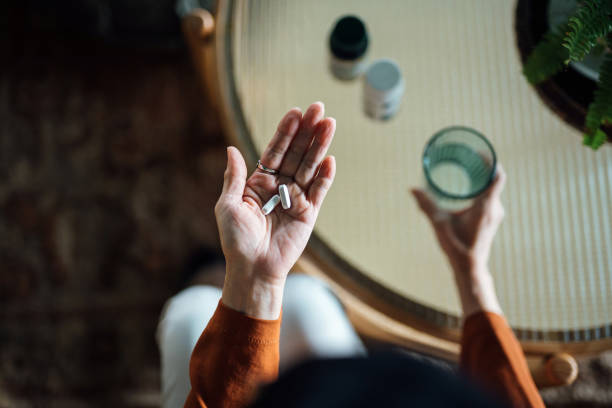
Medication
Medication such as SSRIs (selective serotonin reuptake inhibitors) or benzodiazepines may be prescribed for severe anxiety. Always consult a healthcare professional for guidance.
Lifestyle coaching and holistic therapies
Techniques such as yoga, acupuncture, or aromatherapy can complement traditional treatments, promoting relaxation and balance.
Practical strategies for everyday management
Incorporate these tips into your routine:
- Create a “quiet corner”: Dedicate a space for relaxation with books, soothing music, or aromatherapy.
- Time management: Prioritize tasks so you don’t get overwhelmed. Use a planner or app to stay organized.
- Celebrate small wins: Recognize yourself and reward yourself for progress, no matter how small.
Breaking the stigma around anxiety
Living with anxiety can feel isolating, but it’s important to know you’re not alone. Open conversations and education about mental health can break down barriers and promote understanding.
Finding your path to relief
Although anxiety may never disappear completely, learning to manage it effectively can transform the way you live your life. Small, consistent changes — with professional help if needed — can bring profound relief.
Remember: You are stronger than your anxiety. Taking steps toward healing is a victory worth celebrating.
If you’re ready to embark on this journey toward managing anxiety, start by discovering your triggers, practicing mindfulness, and seeking help when you need it. With patience and persistence, peace is within reach.
For more resources on holistic health and wellness, visit Holistically Health & Beauty.
Let’s take a deeper look at specific aspects of anxiety: its portrayal, treatment options, and practical insights for effectively handling anxiety attacks.
Anxiety Inside Out 2: Understanding the inner workings of the mind
The animated film Inside Out depicts emotions such as happiness, sadness, and anger as characters, offering a new perspective on mental health. Had Inside Out 2 focused on anxiety, it could have revealed the complex interplay of brain chemistry, life experiences, and thought patterns that lead to this overwhelming feeling.
How Anxiety Affects the Brain
- The amygdala: The brain’s “fear center,” responsible for activating the fight-or-flight response, is overactive in people with anxiety.
- The prefrontal cortex: This area, which controls logical thinking and decision-making, may be underactive, making it harder to rationalize fear.
- The hippocampus: Memories stored here can trigger anxiety, especially when linked to traumatic experiences.
Understanding these mechanisms can help us see anxiety not as a defect but as a natural response that sometimes becomes overactive.
Anxiety medication: options and considerations
For some people, managing anxiety requires more than lifestyle changes or therapy. Medications can play an important role in reducing symptoms, allowing a person to function more effectively.
Types of anxiety medications
1. Selective serotonin reuptake inhibitors (SSRIs):
- Usually prescribed for long-term management.
- Examples: sertraline (Zoloft), and fluoxetine (Prozac).
- Work by increasing serotonin levels, and improving mood.
2. Serotonin-norepinephrine reuptake inhibitors (SNRIs):
- Help balance both serotonin and norepinephrine.
- Examples: venlafaxine (Effexor), and duloxetine (Cymbalta).
3. Benzodiazepines:
- Provide immediate relief for acute anxiety or panic attacks.
- Examples: alprazolam (Xanax), and lorazepam (Ativan).
- Risks: Dependence and tolerance if used long-term.
4. Beta-blockers:
- Reduce physical symptoms of anxiety such as rapid heartbeat and tremors.
- Often used situationally (e.g., before public speaking).
5. Buspirone:
- A non-habit-forming medication is suitable for generalized anxiety disorder (GAD).
Important considerations
- Always consult a healthcare provider before starting or stopping medication.
- Medications may take weeks to show full effect.
- Combining medication with therapy (such as CBT) often yields the best results.
Anxiety attacks: coping in the moment
An anxiety attack, often confused with a panic attack, involves intense feelings of fear or anxiety accompanied by physical symptoms. While panic attacks are usually sudden and intense, anxiety attacks can gradually develop in response to stress.
Anxiety attack symptoms
- Fast or pounding heartbeat.
- Difficulty breathing or hyperventilating.
- Feeling dizzy or lightheaded.
- Sweating or feeling chills.
- Nausea or upset stomach.
- Feelings of extreme fear or doom.
Steps to manage an anxiety attack
1. Accept the attack
- Recognize it for what it is — a temporary phenomenon that will pass. Remind yourself: “This is anxiety. It feels uncomfortable but not dangerous.”
2. Focus on breathing
Practice box breathing:
- Breathe in for 4 counts.
- Hold for 4 counts.
- Exhale for 4 counts.
- Hold for 4 counts.
Repeat until symptoms subside.
3. Activate your senses
- Use grounding techniques (e.g., holding an ice cube, listening to soothing music, or inhaling a calming scent such as lavender).
4. Change your thoughts
- Distract your mind with a simple activity, such as counting backward from 100 or naming objects of a certain color around you.
5. Contact
- If possible, talk to someone you trust. Expressing your feelings can reduce their intensity.
After the attack
- Reflect on what triggered the incident. Journaling can help identify patterns.
- Practice self-care, such as drinking water, eating a light snack, or resting.
Bringing it all together
Whether it’s depicted in the fictional Inside Out 2 or experienced firsthand, anxiety is a complex but manageable condition. Understanding its workings, exploring treatment options such as medication, and equipping yourself with tools to deal with anxiety attacks can make a significant difference.
You don’t have to face anxiety alone. Seek help, educate yourself, and take small steps toward a more peaceful and empowered life.
Frequently Asked Questions (FAQs) About Anxiety
Below are some of the most common FAQs about anxiety, providing helpful answers for anyone seeking clarity or guidance:
1. What is anxiety?
Anxiety is a natural stress response, associated with feelings of fear or apprehension about the future. When these feelings become excessive or interfere with daily life, they may be a sign of an anxiety disorder.
2. What are the different types of anxiety disorders?
There are many types of anxiety disorders, including:
- Generalized anxiety disorder (GAD): Excessive worry about everyday matters.
- Panic disorder: Sudden, intense fear that leads to physical symptoms such as increased heartbeat.
- Social anxiety disorder: Fear of social interactions or being judged by others.
- Specific phobia: Intense fear of specific objects or situations.
- Obsessive-compulsive disorder (OCD): Recurring, unwanted thoughts and repetitive behaviors.
- Post-traumatic stress disorder (PTSD): Anxiety triggered by a traumatic event.
3. What are the main causes of anxiety?
Anxiety can result from a combination of several factors, including:
- Genetics and family history.
- Brain chemistry imbalances.
- Traumatic or stressful life events.
- Chronic health conditions.
- Substance abuse or withdrawal.
4. How is anxiety diagnosed?
A healthcare professional will evaluate symptoms, medical history, and lifestyle factors. Diagnosis often involves a combination of physical exams, mental health assessments, and questionnaires.
5. What are the common symptoms of anxiety?
- Excessive worry or fear.
- Restlessness and irritability.
- Fatigue and difficulty sleeping.
- Rapid heart rate and shortness of breath.
- Muscle tension and headaches.
6. Can anxiety be cured?
Although anxiety cannot always be “cured,” it can be effectively managed through therapy, medication, lifestyle changes, and coping strategies.
7. What are the best treatments for anxiety?
- Therapy: Cognitive behavioral therapy (CBT) is one of the most effective methods.
- Medication: SSRIs, SNRIs, or benzodiazepines may be prescribed.
- Lifestyle adjustments: Regular exercise, healthy diet, and stress management.
- Mindfulness practices: Meditation and breathing exercises.
8. How can I help someone with anxiety?
- Be supportive and patient.
- Encourage them to seek professional help if needed.
- Educate yourself about anxiety disorders.
- Avoid downplaying their feelings or offering unsolicited advice.
9. How long do anxiety attacks last?
Anxiety attacks can last from a few minutes to several hours, depending on the person and the trigger. However, they often peak within 10 minutes.
10. Can children have anxiety disorders?
Yes, children and teens can have anxiety disorders. Symptoms often include excessive worry, fear of separation from caregivers, or difficulty concentrating at school.
11. Are anxiety and depression the same?
No, anxiety and depression are different conditions, but they often exist together. Anxiety involves excessive worry, while depression is characterized by persistent feelings of sadness or hopelessness.
12. Can diet affect anxiety?
Yes, diet can affect anxiety levels. Foods rich in magnesium, omega-3 fatty acids, and probiotics may help reduce symptoms. Conversely, caffeine, sugar, and alcohol may increase anxiety.
13. Is anxiety genetic?
Anxiety disorders may run in families, which suggests a genetic component. However, environmental factors also play an important role.
14. Can exercise help anxiety?
Yes, regular exercise releases endorphins, reduces stress, and improves mood, making it an effective strategy for managing anxiety.
15. Should I avoid caffeine if I have anxiety?
Caffeine can worsen anxiety symptoms such as restlessness and a rapid heartbeat. Reducing or eliminating caffeine intake may help some individuals.
16. When should I see a doctor about my anxiety?
Seek professional help if: Your anxiety is persistent and affects daily life. You experience physical symptoms such as chest pain or shortness of breath. You find it difficult to control your anxiety. Understanding anxiety through these frequently asked questions can empower individuals to seek help and adopt effective management strategies. For more detailed guidance, always consult a healthcare provider.

